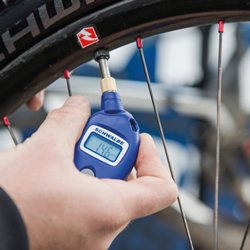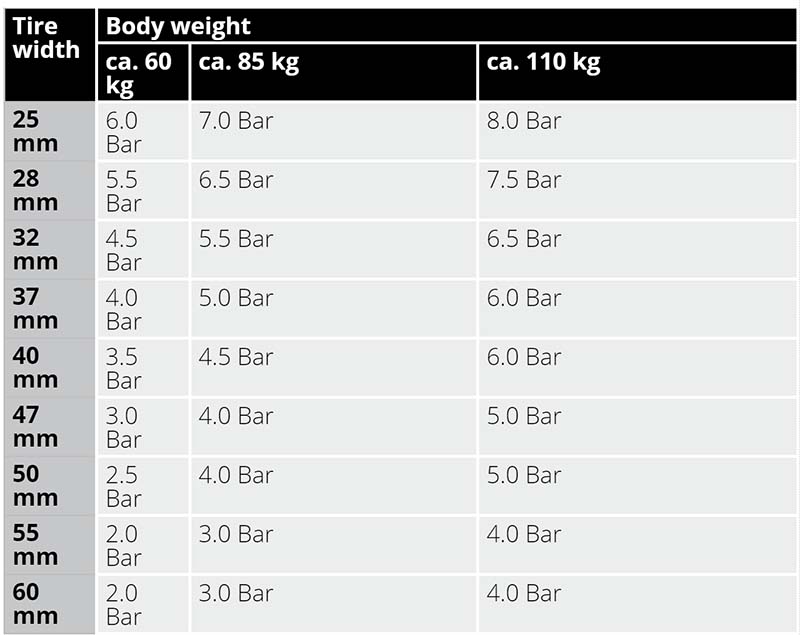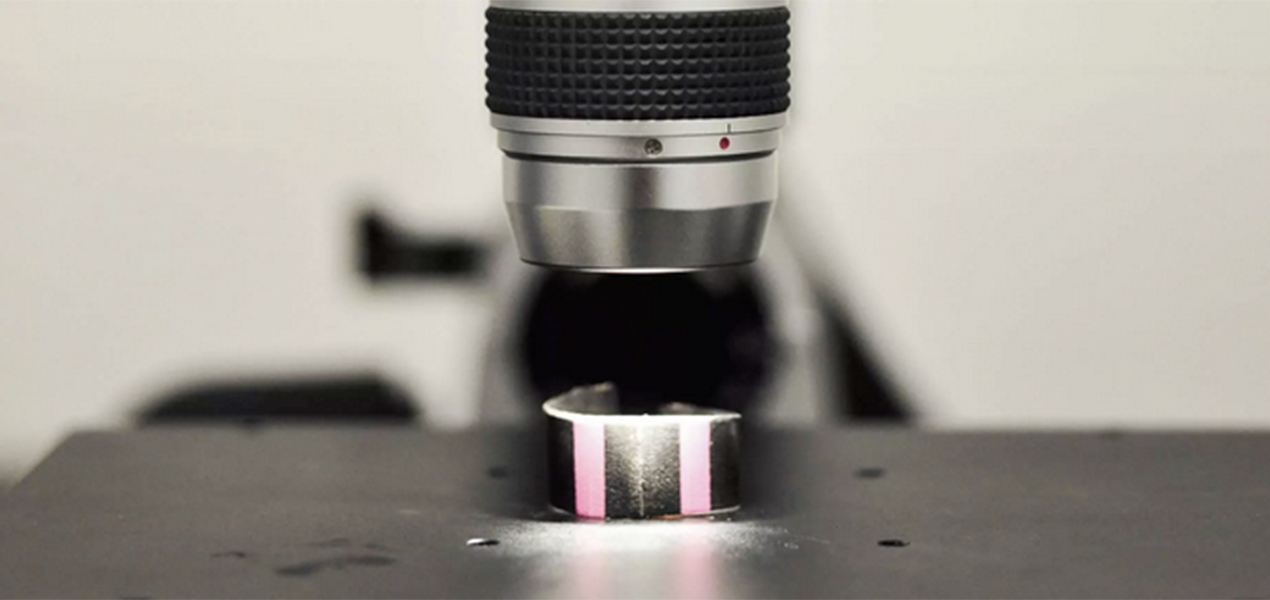WHY IS THE INFLATION PRESSURE OF BICYCLE TIRES SO IMPORTANT?
Only tires with sufficient inflation pressure can bear the weight of a bicycle. The following applies for the road: The higher the inflation pressure the lower the rolling resistance of the tire. The susceptibility to punctures is also lower with high pressure. If the inflation pressure is continuously too low, premature tire wear is the result. Cracking of the sidewall is the typical consequence. Abrasion is also unnecessarily high.
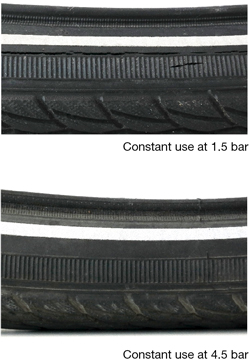
HOW OFTEN SHOULD INFLATION PRESSURE BE CHECKED?
The inflation pressure should be checked and adjusted at least once a month. Even the best tubes constantly lose pressure as, contrary to car tires, the pressure required in bicycle tires is much higher and wall thickness much thinner. A pressure loss of 1 bar per month can be viewed as normal, but pressure loss will be much faster with high inflation pressures and much slower with low inflation pressures.
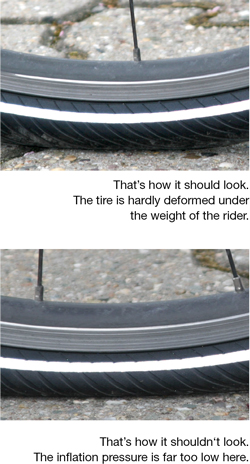
WHAT IS THE CORRECT INFLATION PRESSURE FOR MY TIRE?
